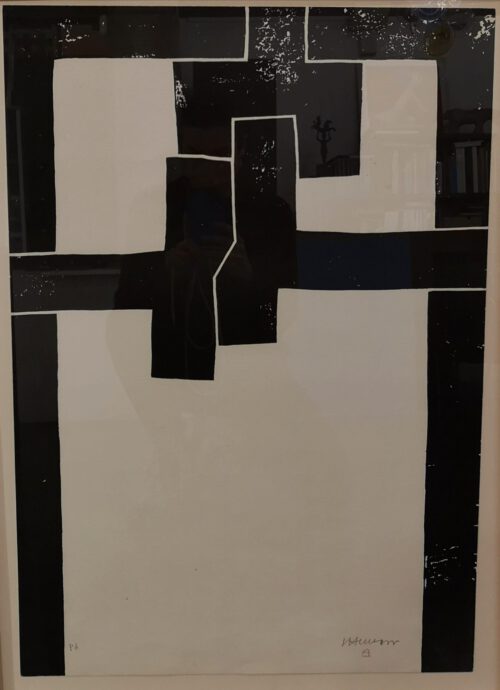Barcelona d’Eduardo Chillida
Exhibition
Transferir imatges. Horitzons 2050
Main features
- Title: Barcelona d'Eduardo Chillida
- Technical: Lithography
- Dimensions: 11,81x7,87 inches
- Year: 1971
- Price: 4.200 €
Description of the work
The work Barcelona by the artist Eduardo Chillida. Lithography technique on paper. Measures 72 x 50 cm. Edition: P / A
(Eduardo Chillida Juantegui; San Sebastián, 1924 - 2002) Spanish sculptor, considered one of the most important of the twentieth century. Born into a traditional family with strong Catholic convictions, he was the third son of Pedro Chillida, a military man who would reach the rank of lieutenant colonel, and Carmen Juantegui, a housewife fond of singing who combined domestic work with practice of choral concerts in the Orfeó Donostiarra.
In 1948, looking for a creative environment more conducive to that of Franco's Spain, he moved to Paris. There he befriended the painter Pablo Palazuelo and, in addition to getting to know first hand the work of artists such as Picasso, Julio González and Constantin Brancusi, he felt a special fascination with the archaic Greek sculpture of the Louvre. In this first and ephemeral stage he made a series of sculptures in plaster and terracotta, still influenced by the figurative tradition. However, those artistic polls did not satisfy Chillida.
Exhausted and frustrated, he decided to leave the French capital to return to his homeland. Some time later, recalling those years, I would say: “I realized that Paris, as well as my frequent visits to the Louvre, led me to the white light of Greece, of the Mediterranean. I realized that was not my place and I said to Pili, "Let's go home, I'm done." When I arrived, I understood why I felt finished: my country has a black light, the Atlantic is dark.
In 1951 he moved to the Basque Country with his wife, Pilar Belzunce, with whom he had married a year earlier. In the Guipuzcoan town of Hernani he began working in the forge of Manuel Illarramendi, who taught him the secular secrets of the art of forging.
That same year, Chillida illuminated his first abstract sculpture, Ilarik: an austere and "primitive" stele in which iron and wood (materials with strong mythical connotations within Basque tradition and culture) were integrated by denying the old hierarchy between "statue" and "pedestal." This work was a before and after in his artistic career, not only for the choice of the materials mentioned, but, above all, because they were based, although still incipient, constitutive concepts of his later work as the space, matter, emptiness or scale.


